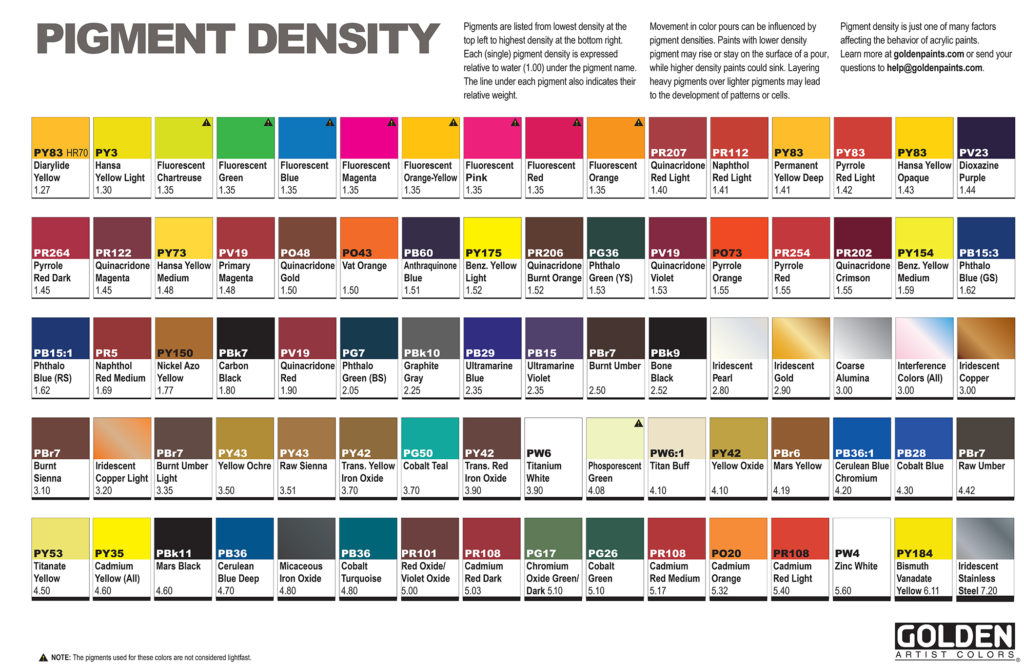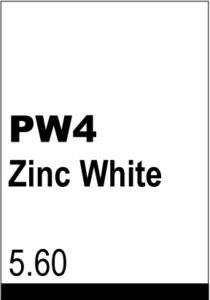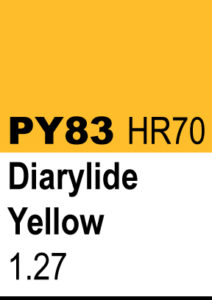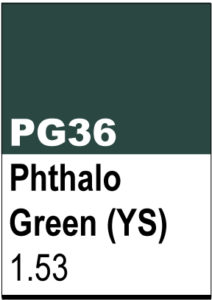This chart provides information on pigments used in Golden Acrylics. Pigment density is one of many factors affecting the behavior of acrylic paints within color pours. Generally, heavier pigments will have a tendency to sink and lighter pigments could rise to the surface.
To see a larger image, click here to download the chart as a PDF.
Example 1: The higher density Zinc White mixture sinks into the lower density Diarylide Yellow mixture, nearly disappearing completely.
Example 2: The lower density Diarylide Yellow mixture stays on top and expands over the higher density Zinc White mixture, almost completely covering it.
Example 3:This example illustrates how using a high density pigment such as Zinc White over a lower density pigment such as Phthalo Green (YS) can produce cells and other patterns. Gravity pulls the higher density downward while the lower density mixture rises and spreads on the surface. This dynamic creates cell patterns without using additives.
About Brent DeLanoy
View all posts by Brent DeLanoy -->Subscribe
Subscribe to the newsletter today!





Love this.. it all makes sense…I ‘ve always got cells in my pours..without adding silicone…I always seem to use white and that’s where cells always show..its higher density working against lower density.
We are glad that this resource is helpful and you are having success creating cells through density and without the use of silicone! Best of luck in your pours!
– Scott Fischer
thank you for the valuable information on pourring medium and colour density effect.
Hello Danieĺle,
We are glad this information is helpful, we try our best to provide as many resources for artists as we can! If you ever have questions you can always reach out to us at [email protected].
Best,
Scott Fischer
Such a helpful learning resource, thank you.
Whilst having an understanding of how cells form by using paints with differing pigment densities, and a very basic leyman’s understanding of the principle of the Rayleigh Taylor instability, I’m struggling to understand why, when paints are thinned beyond a certain level the paint seems to behave in an anomalous way. For example when both paints are thinned to a certain level, if the yellow in your example were poured onto the white the yellow would sink and white cells form. Despite research, without a degree in fluid dynamics, I’ve been unable to make sense of this. Please can you help?
Hello, Dawn.
While I also do not have a degree in Fluid Dynamics, I hope I can assist. If all things were the same, except for the pigment differences, the pigments with a heavier density will want to sink, while lighter, less dense pigments will either remain suspended or rise. In the R-T instability model, any differences in density can create the pattern and movement. The other factors are viscosity (thickness), rheology (flow dynamics – short and buttery vs long and ropey), and surface tension. Surface tension differences is the factor that people use Floetrol and Silicone oils. When you have extremely low surface tension additives they can create cells in any fluid paint mixture that has a higher surface tension. This can override the other factors because silicone oil’s surface tension is vastly lower than pretty much everything in acrylic paints at least.
But getting back to pigment density, the Titanium White pigment has a higher density than the yellows such as Benzi, Hansa, Diarylide, etc) so the white sinks downward, and forces the yellow upward. As the R-T instability begins, and the pigments are being forced to separate, it creates a contrast. The thinner the paint mixture is and the longer it stays wet can allow the process to continue until the paint layer starts to set up and dry. That yellow paint is moving up and pushing the white out of the way, especially if there’s yellow paint under the white layer, compared to yellow over white. Yellow starting on top won’t really develop cells in that instance.
Does that help?
– Mike Townsend
Thank you for this information, so very helpful to artists trying to create interesting acrylic pours! I appreciate it very much
Hello Laura,
We are glad you found the article helpful! In addition to the chart which can be opened via the link in the article, we have a density list for our single pigment acrylic paints on the Golden website. This list can be sorted by density or by paint name. Happy painting, Cathy
The depth of information on pigment density and its impact on paint properties is truly enlightening. It’s interesting to see how pigment density not only affects the color strength but also influences the behavior of paint in different mediums. This article is a great resource for artists and paint enthusiasts to understand the science behind their materials better. Thanks for sharing such valuable insights!
Thank you for your comments, Jane. We are pleased you find the information of value and useful. The thinner the paint mixture is, more more of a role pigment density will play in the development of patterns and layering.
– Mike Townsend